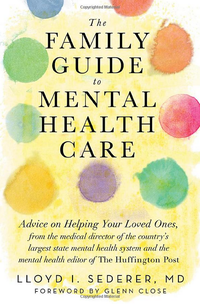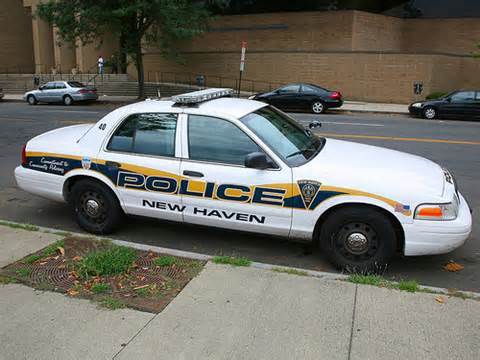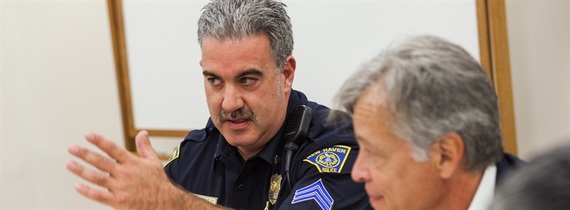Community Policing and Child Development: Averting Traumatic Disorders
Lloyd I. Sederer, M.D.
You could tell the police sergeants in blue from the lieutenants and chiefs in their white-shirted uniforms. But 11 were there, including Dean Esserman the New Haven Chief of Police, representing their respective precincts for the weekly meeting with about as many clinicians from the Yale Child Study Center as well as staff from the Connecticut Department of Child and Family Services. This remarkable collaboration has run for over 22 years orchestrated by Dr. Steven Marans, a psychoanalyst and professor at Yale and an innovator in the prevention of and intervention in the often devastating effects of childhood trauma.
The meeting began with one sergeant describing a domestic violence incident in which a 6-year-old child witnessed a stabbing in the home. Police, mental health and child protection professionals sat around a large conference table with wooden arm chairs (that barely allowed the utility belted, armed police to nest within them) as if it were a graduate seminar. The university location at Yale meant that the participants discussed not only the safety measures taken but also what evidence-based, clinical interventions had been provided for the family and child, and what else might be done.
Other incidents on the day I visited followed, all characterized by a child witnessing or directly being a victim in his or her home. These are the kind of nightmares that the youth does not awaken from to reassuring words that it was just a dream. As many as 10 new incidents are reviewed each week, and a group of follow-up cases are then worked through. In 60 minutes, in crisp, definitive and compassionate ways, these professionals try to avert the very probable consequences of a witnessed or actual trauma to the child (including beating or rape) by providing proven, effective interventions that call upon all their collective efforts.
The CD-CP (Child Development-Community Policing) program, originated by the Yale Child Study Center's National Center for Children Exposed to Violence, understands that problems don't disappear once the immediate violence is contained. Inside the mind of the child -- witness or victim -- the trauma begins to do its insidious and destructive work. The program began in New Haven out of concerns about two wars in the early 90s: the Persian Gulf War calling up fears that another Vietnam-like event would be our ghastly nightly TV experience, and the cocaine gang wars that were ravaging New Haven (and many other cities). Trauma was the enemy the CD-CP program sought to fight.
After a trauma, over time, a child's functioning at school or home deteriorates as attention wanes and distress becomes paramount. Symptoms of post-traumatic stress disorder (PTSD) and related disorders appear, often months later, and can include withdrawn or aggressive behaviors, difficulties with sleep and eating, stomach pains and headaches, tearfulness or severe anxiety. Before traumatic disorders set in is when we can make the greatest difference: prevention trumps illness, with its trajectory of impaired educational and social development, and its association with later criminal justice involvement as well as health and mental health problems.
The scope of violence exposure in children in this country seems beyond our emotional comprehension. How do we appreciate the impact of approximately 800,000 children annually confirmed by child protection agencies as victims of neglect or abuse? How can we get our heads around the 2 million (!) youth, ages 12 to 17, who have been victims of sexual abuse; or the 4 million (!) who have been physically assaulted; and the 9 million (!) who have seen with their own eyes serious violence. The public health and mental health consequences in these legions of victimized youth (and in all our communities) are well known (ACEs: Adverse Childhood Experiences - http://www.huffingtonpost.com/lloyd-i-sederer-md/adverse-childhood-experiences_b_4256732.html; http://acestoohigh.com/2014/03/17/vermont-first-state-to-propose-bill-to-screen-for-aces-in-health-care/ ), with chronic physical illnesses, teenage pregnancy, and mental and addictive disorders setting in before a child reaches the age of majority.
The CD-CP program has mental health professionals join police calls. The social workers, psychiatrists and psychologists I met go out in the evenings with a New Haven police officer in a cruiser, partners from the moment of trauma, each complementing the other because the problems they encounter are without clear criminal justice or mental health boundaries. After they respond to an incident they go back, together, after safety has been restored to reconnect with caregivers and children and to offer more. The home visit happens within 72 hours of the event and focuses on maintaining safety, mobilizing resources and showing that police do more than take people away. The CD-CP program includes cross training, consultations and case conferences. And it delivers what is called "trauma-focused treatment."
The trauma-focused treatment, called The Child and Family Traumatic Stress Intervention (CFTSI), involves four to six sessions with caregiver(s) and impacted child(ren), ages 7 to 18 -- also done in the immediate wake of the incident. It aims to detoxify the trauma and avert its producing a disorder, and a deepening pit of psychic and physical pain, illegal activities, and long term disability. It is free and confidential -- and voluntary. A controlled study in 2009 found that CFTSI served youth were 65 percent less likely to develop PTSD at three months and 73 percent less likely to have full PTSD or its partial expression.
Trauma, as Dr. Marans says, is at the "hub of the cycle of violence, circling from childhood exposure to violence to adult perpetration of violence... " The CD-CP program is now going on in over 15 US cities, including New Haven, Providence, Charlotte, NC and Wilmington, DE. Some families continue in treatment at the CSC, or with other community services, and some are lost to follow-up -- likely to appear again when police return to a site of domestic violence. Imagine a neighborhood, even yours, where cops and clinicians -- and government -- demonstrate (not just say) that an ounce of prevention is worth a pound of cure.
References
Marans, S, Smolover, D, Hahn, H: Responding to Child Trauma: Theory, Programs and Policy, in Handbook of Juvenile Forensic Psychology and Psychiatry (Grigorenko, EL, editor), Springer, 2012
Finkelhor, D, Ormrod, RK, Turner, HA: Lifetime assessment of poly-victimization in a national sample of children and youth. Child Abuse & Neglect, 33(7), 403-411
The Safe Horizon-Yale Child Study Center Partnership: Offering Hope for Abused Children (https://www.safehorizon.org/images/uploads/misc/1333460124_ChildAbuse_CFTSI_WhitePaper_Final.pdf)
Child Development-Community Policing, 2008 DVD, by The National Center for Children Exposed to Violence
=========
 Dr. Sederer's new book for families who have a member with a mental illness is The Family Guide to Mental Health Care (Foreword by Glenn Close).
Dr. Sederer's new book for families who have a member with a mental illness is The Family Guide to Mental Health Care (Foreword by Glenn Close).
www.askdrlloyd.com http://www.askdrlloyd.com
The opinions expressed here are solely mine as a psychiatrist and public health advocate. I receive no support from any pharmaceutical or device company.
Copyright Dr. Lloyd Sederer

